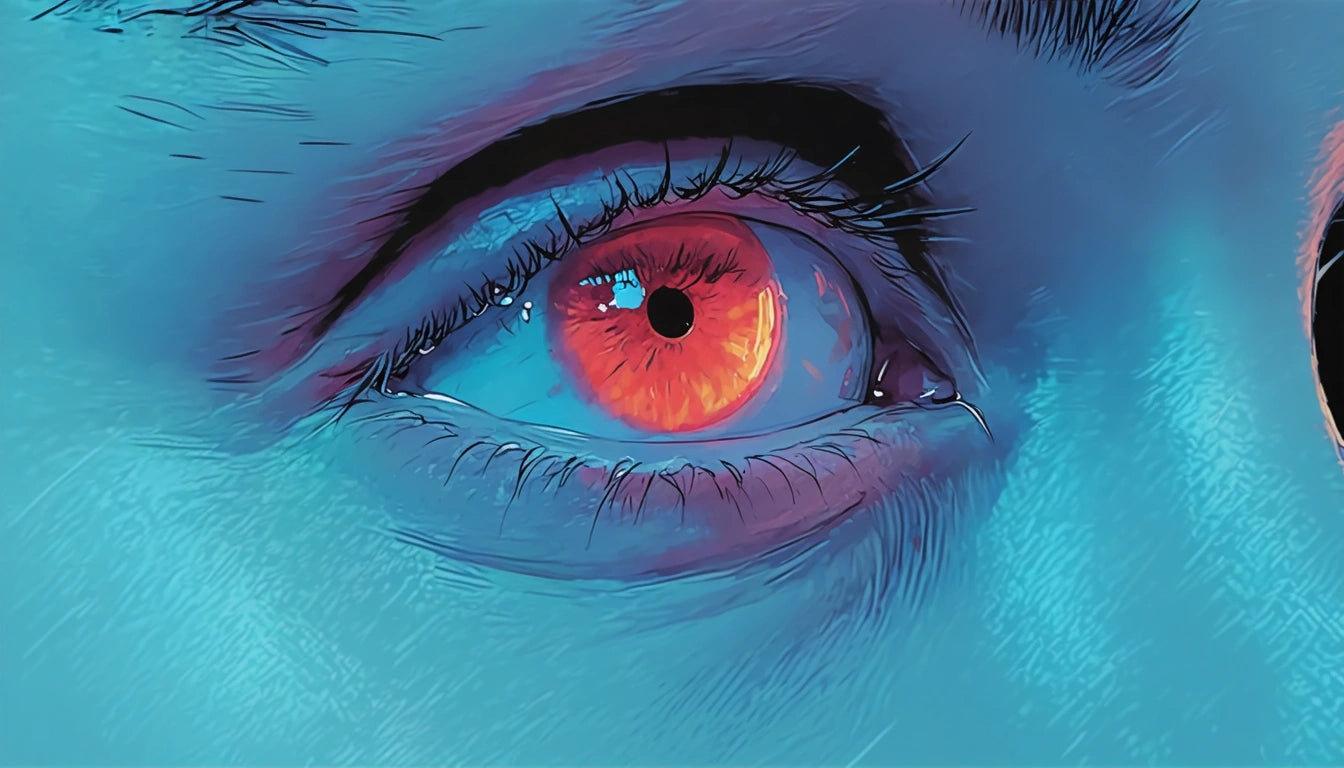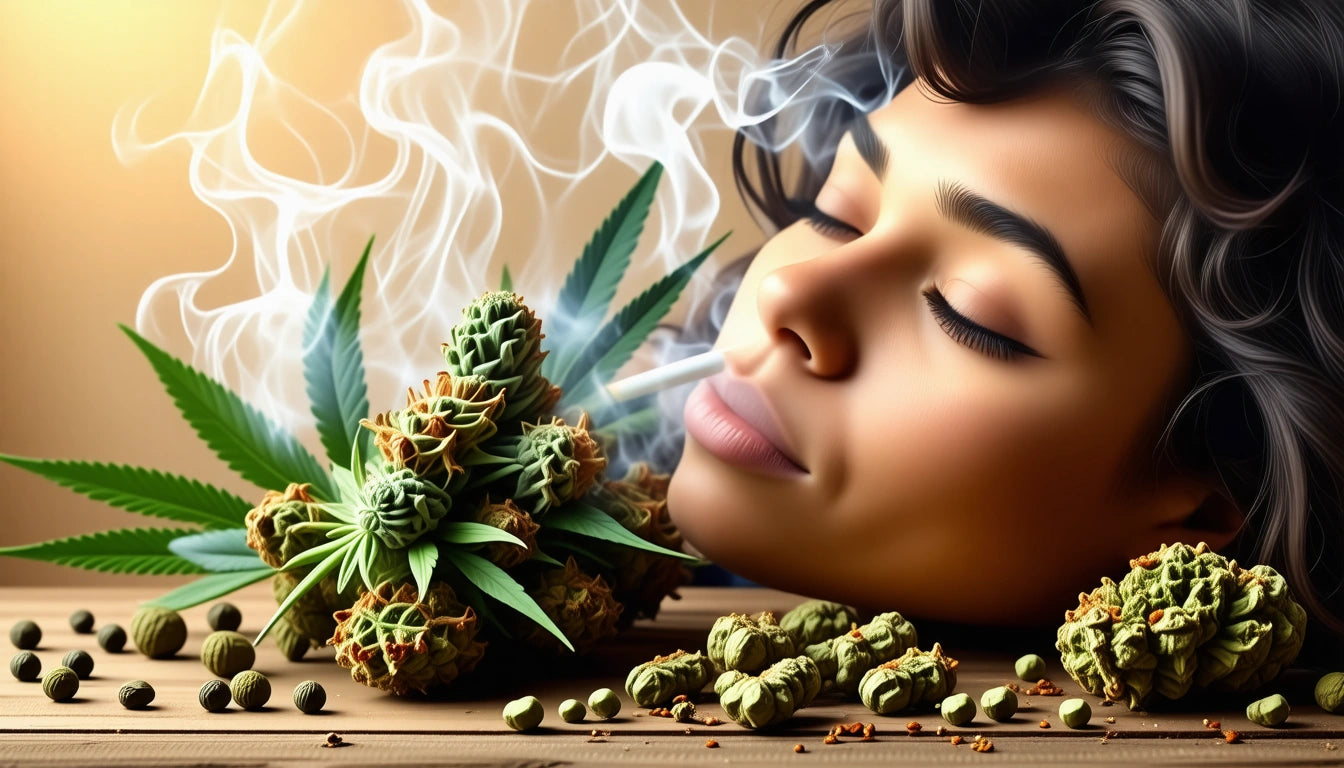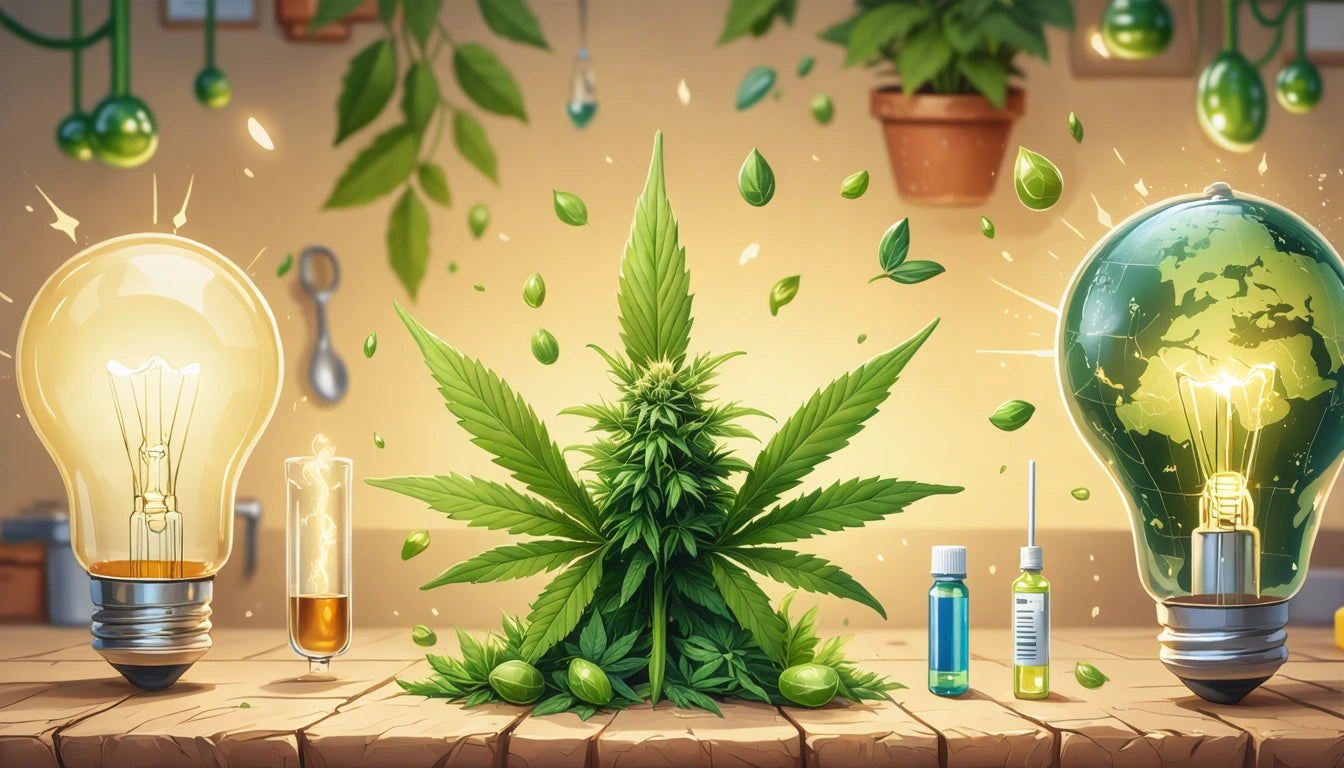Table of Contents
What Does Being High Look Like? Visuals and Signs Explained
Cannabis affects individuals in various ways, producing both internal experiences and external signs that can be observed by others. Understanding what being high looks like helps with responsible use, recognizing when someone might need support, and managing social situations where cannabis use may be a factor.
Physical Signs of Being High: Visual Indicators
The most recognizable visual sign of cannabis intoxication is changes to the eyes. When someone is high, blood vessels in the eyes dilate, creating the characteristic redness that many associate with cannabis use. This effect, commonly known as "bloodshot eyes," occurs because THC lowers blood pressure, causing blood vessels to expand.
According to research on cannabis effects, other physical signs include:
- Droopy or heavy-lidded eyes
- Dilated pupils (especially in low light)
- Reduced eye focus or slight glazing
- Delayed blink response
- Squinting (particularly in bright environments)
Facial expressions often change as well. Users may display a relaxed facial posture, with less tension around the jaw and forehead. Some individuals experience dry mouth, leading to frequent licking of lips or increased water consumption.
Behavioral Changes When High: Observable Patterns
Beyond physical appearances, being high manifests in behavioral patterns that others can observe. These changes vary based on the individual, cannabis strain, and consumption method, but common indicators include:
Movement and Coordination
Cannabis can affect motor skills and coordination. This might appear as:
- Slower, more deliberate movements
- Slight unsteadiness when standing or walking
- Reduced reaction time
- More relaxed posture or slouching
For some users, especially with higher doses, movements may become exaggerated or less precise. When handling objects, there might be minor fumbling or a tendency to focus intently on simple tasks.
Speech Patterns
Communication often changes when someone is high. Recognizing these speech patterns can help identify cannabis intoxication:
- Slower speech cadence
- Longer pauses between thoughts
- Tangential conversations (shifting topics frequently)
- Increased laughter or finding mundane things humorous
- Philosophical or abstract discussions
Visual Experiences While High: What Users See
Understanding what users actually see when high helps complete the picture of cannabis effects. Many users report enhanced visual experiences, which can include:
Perception Changes
Cannabis can alter how users perceive their surroundings. Common visual experiences include:
- Enhanced color vibrancy and contrast
- Heightened pattern recognition
- Increased appreciation for visual details
- Mild visual tracers (especially with higher doses)
- Altered depth perception
These effects explain why many users seek out visually stimulating activities when high. Whether watching films with striking cinematography or exploring nature, the enhanced visual perception can make ordinary scenes appear extraordinary.
Many cannabis enthusiasts store their products in specialized storage containers with vibrant designs that become even more visually engaging during the cannabis experience, combining functionality with enhanced aesthetic appeal.
Factors Influencing Appearance When High
Several variables affect what being high looks like for different individuals:
Strain and Consumption Method
Different cannabis varieties produce distinct effects:
- Sativa-dominant strains often result in more energetic, alert appearances
- Indica-dominant varieties typically cause more pronounced physical relaxation
- Hybrid strains produce balanced effects
- Consumption methods (smoking vs. edibles) affect onset time and intensity of visible signs
Individual Variables
Personal factors significantly influence visible signs:
- Tolerance level (regular users show fewer obvious signs)
- Body chemistry and metabolism
- Hydration status (affects eye redness)
- Fatigue level before consumption
- Concurrent substances (caffeine, alcohol)
These variables explain why some people always appear high even when sober, while others can maintain a relatively normal appearance even after consuming cannabis.
Recognizing Different Types of Cannabis Highs
Cannabis can produce varying states of intoxication, each with distinct visual signatures:
Euphoric High
Characterized by:
- Animated facial expressions
- Increased sociability and talkativeness
- Energetic movements
- Bright, engaged eye contact
Relaxed High
Displays as:
- Slower movements
- Relaxed facial muscles
- Calm, steady breathing
- Reduced physical activity
- Comfortable, settled posture
Sedative High
Appears as:
- Heavy eyelids or partial eye closure
- Minimal movement
- Delayed responses
- Deep relaxation or sleepiness
- Reduced awareness of surroundings
According to experts on cannabis experiences, these different types of highs are influenced by cannabinoid profiles, terpenes, and individual sensitivity.
Managing Visible Effects of Being High
For those concerned about the visible signs of cannabis use, several strategies can help minimize noticeable effects:
- Eye drops specifically formulated to reduce redness
- Proper hydration before, during, and after cannabis use
- Choosing lower-THC products or balanced THC:CBD ratios
- Mindful dosing to prevent overwhelming effects
- Practicing awareness techniques to maintain composure
Understanding what being high looks like also helps users recognize when they might need to wait before engaging in certain social or professional situations. Effective management strategies can help users enjoy cannabis responsibly while minimizing unwanted attention or concerns.
By recognizing the visual and behavioral signs of cannabis use, both users and non-users can better understand the effects of cannabis and approach its use with greater awareness and responsibility.











Leave a comment
All comments are moderated before being published.
This site is protected by hCaptcha and the hCaptcha Privacy Policy and Terms of Service apply.